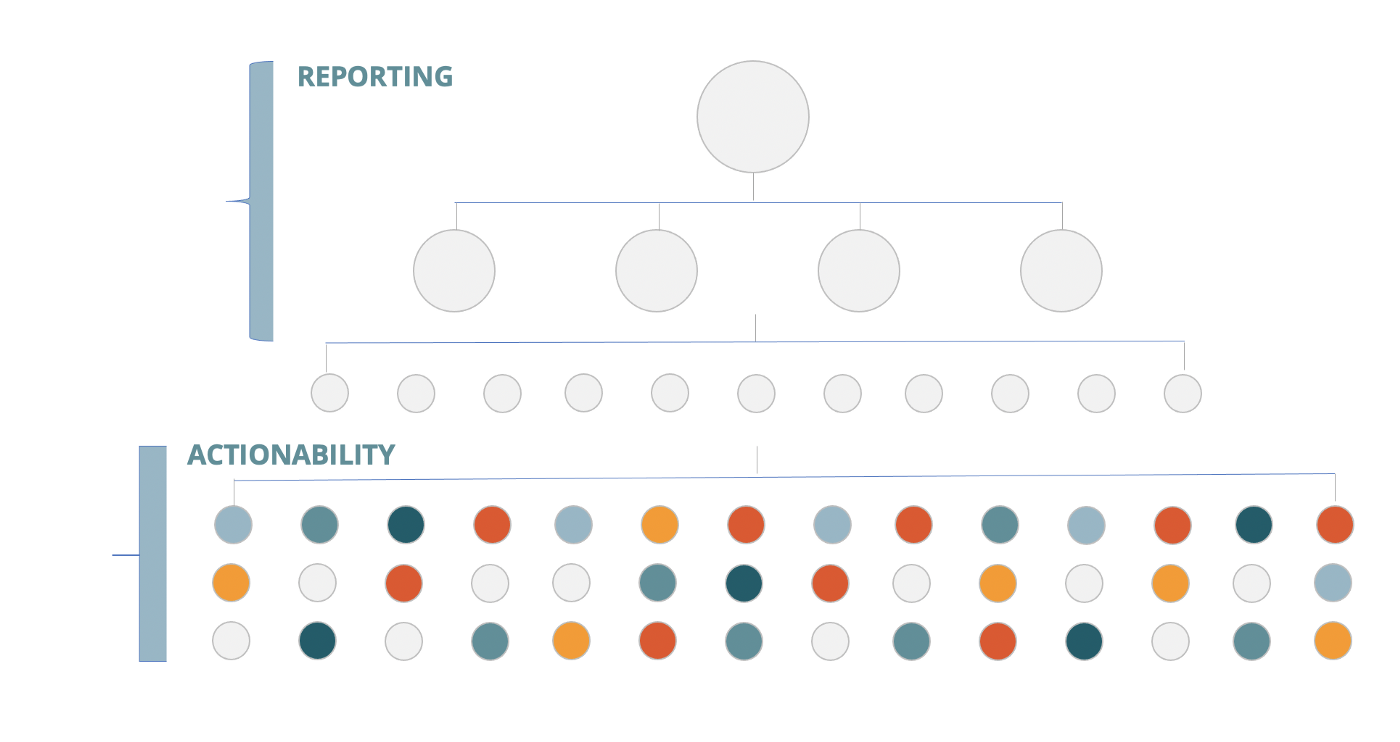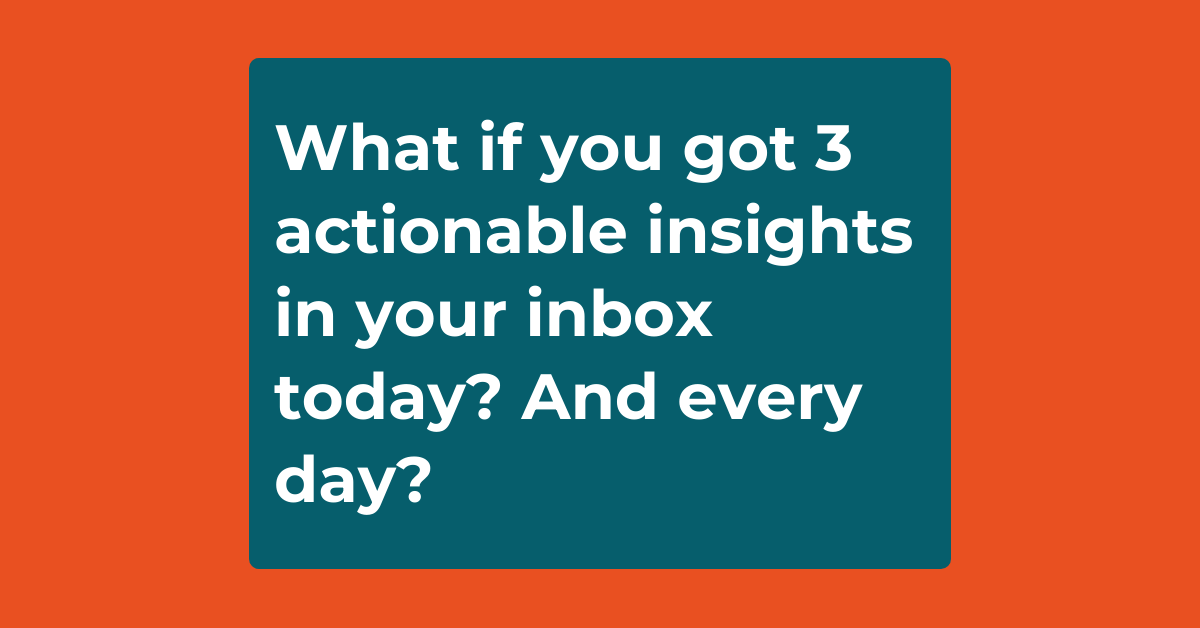BHAM stands for Business Health & Activity Monitoring. I’ll explain what this means in a bit. First, let’s recap how revenue teams currently use data to hit quarterly goals. The 3 weapons in the arsenal today are:
- Forecasting and goal Setting: The quarter begins with a revenue forecast. This helps teams set expectations with the board and the public market on how the business will grow. If these expectations are not met, there is loss of credibility. From the forecast emerges a set of goals for demand generation teams, sales teams, and customer success teams. These are often output goals (e.g. we must generate X leads, we must have NPS of Y, we must have Z opportunities of a certain size).
- Dashboards: There are dashboards that visualize current aggregate performance against the goals we’ve set. E.g. Goal is X Leads, Current is Y Leads.
- Business reviews: Accountability is driven via weekly or monthly business reviews. Team leaders review dashboards and there’s often a discussion with more questions than answers. These questions all express a desire to understand the health of the business at a deeper level. This desire is grounded in the need to take action. If a team is way off track relative to their goals, analytics teams do offline analysis to get to deeper, more actionable insights.
If you do all of these, you represent the current peak of “data driven” execution.
But this is merely scratching the surface of opportunities to increase revenue, improve customer satisfaction, and optimize return on marketing activities.
Focus on the journey, not the destination
Revenue and customer satisfaction are the destination. How we get to our desired revenue and growth goals is determined by the volume and quality of activities we perform.
These revenue generating activities include:
- Marketing campaigns
- Advertising spend
- Marketing content
- Webinars & events
- ADR (Sales Development) calls, follow up emails, meetings
- Account Executive calls, follow up emails, meetings
- Activity level for each opportunity
- Account level Solutions Engineering implementation
- Customer training and onboarding
- Support representative and customer success calls
- Support ticket resolution
- Business reviews with customers
The devil is in the details

These activities are not performed at the region, SKU, segment or channel level (which is where traditional reporting lives). They are performed at the most granular of levels (for each account, by each campaign, each ad, each piece of content, each support ticket and how it’s resolved, each ADR and what they do daily, each AE and what they do daily). Yet all of our business intelligence and insights are stuck at the aggregate level.
Similarly, these activities are performed every single day, not weekly or monthly. Yet our business reviews happen only once a week or month.
Actionability lives in daily performance at the most granular of levels. Teams that understand that operational rigor is what results in predictable revenue growth want to operate at this granular level.
But there’s a huge obstacle in the way. Too much information!
Even the most diligent of customer success managers can’t track every account, every training, every customer support issue resolution. Making more dashboards doesn’t help because monitoring every activity across all accounts every day is not a human scale problem.
Introducing BHAM
Business Health and Activity Monitoring (BHAM) uses AI and cloud compute to monitor business activities and their impact, 24/7.
Instead of managers looking at aggregate dashboards with limited visibility, unable to know about every activity for every account, a BHAM system surfaces the 3–5 actionable insights that the manager needs to look into that day.
Anyone can subscribe to the types of insights that are most interesting to them. All insights are delivered in the team’s existing workflows (Email, Slack, Teams).
Not your old fashioned “alerts”
Some elite teams have tried to create homegrown BHAM solutions with fixed thresholds and alerts. Example: Notify me if ADR call volume goes below 50 calls per day. Notify me if Support call volume exceeds 5000 per week. This highlights the extreme need for a BHAM system.
Unfortunately such alerts cause more harm than good for 3 reasons:
- Noise: Rudimentary alerting systems are similar to a broken fire alarm system that keeps going off, annoying everyone in the house to the point that it’s ignored or someone yanks it out. A BHAM system must have sophisticated logic to identify noteworthy insights, and share those with the right people and the right level of urgency.
- Bad news vs insight: Alerts are often “fires” i.e. things going wrong in the business. BHAM insights focus equally on finding opportunities and things the team should be capitalizing on. For instance if a Campaign is performing really well, a piece of content is getting a lot of eyeballs, an ADR is kicking ass and has a fantastic meeting booking rate, or an account has excellent engagement, these are critical insights to uncover. By identifying these, we can double down on these activities.
- Aggregate alerts vs actionable insights: Alerts in Tableau, Looker, and Sisense dashboards are still operating at the aggregate level and on output metrics. Actionable insights live at the Account, ADR, AE, CS Rep, Campaign level. This means you may get an alert saying Customer Support Tickets are going up but you have no idea why. A BHAM insight would tell you that Customer Support Tickets are going up for 12 specific Accounts, managed by 2 specific support reps, and all of them are related to technical support.
Automated BHAM insights
A good business health monitoring system generates insights and delivers via Slack, Email, and automated business review and pipeline reports. A few examples below:
For Marketing Teams
- Campaigns that are generating high volume and high quality leads and has a low CPC
- Campaigns that are a positive influence in opportunity engagement & re-engagement
- Campaigns that are a positive influence in expansion opportunity engagement
- Content that’s being heavily downloaded, read and acted upon
- Desirable and undesirable shifts in lead mix
- Low ROI campaigns that are either not generating enough volume or enough high quality leads but have relatively high CPC
- Proactive alerts about funnel health and pipeline coverage relative to goals
- Dynamic attribution that accurately measures the impact of a campaign on the entire pipeline
For ADR & Sales Development Teams
- ADRs/SDRs that are generating high volume and high quality pipeline
- ADRs/SDRs that are not generating enough volume or quality pipeline
- ADRs/SDRs that are not generating the desired lead mix
- Insights about activities of the top 20% ADRs so that these can be emulated by the rest
- Dynamic attribution that accurately measures the impact of an ADR activities on the entire pipeline
For AE Teams
- Specific accounts that are not getting the right volume or quality of activities to push them through the conversion funnel
- AEs that are highly engaged with opportunities and effectively moving them through the conversion funnel
- AEs that are not following up quickly and not performing activities to move opportunities forward
- Winning Account journeys (top 10) so that these can be emulated
- Losing Account journeys (bottom 10) so that these can be course corrected
- Dynamic attribution that accurately measures the impact of an AE’s activities on the entire pipeline
For Customer Success & Support Teams
- Accounts that are suffering from poor customer support experiences
- Accounts that are stuck and have not engaged with the product due to onboarding issues
- Accounts that are suffering from low NPS and their product engagement is declining
- Customer success managers who are not following up quickly and not performing activities to ensure customer onboarding and engagement
- Solutions engineers who are implementing solutions quickly and effectively for specific accounts
- Support reps who are driving customer satisfaction up with their responsiveness and issue resolution
- Dynamic attribution that accurately measures the impact of CSM and AM activities on customer health
Do you need BHAM?
As software continues to eat the world, any company’s competitive advantage can be eroded quickly. One of the key ways to gain the lead and keep it is to be 10x better on operational rigor.
Doing this manually is impossible at scale. Scale here means anything greater than:
- 50 active accounts
- 100 active campaigns
- 10 ADRs and AEs
- 10 Customer Support reps
- 50 pieces of marketing content
BHAM can unlock predictable and guaranteed revenue generation by identifying gremlins and opportunities in the revenue generating activities that are 100% in your control.
No excuses.
